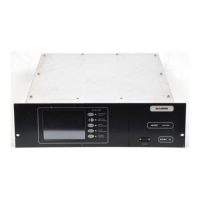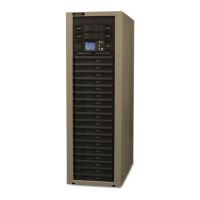______________________________________________HARRIS
888-9058-001
WARNING: Disconnect and lockout AC primary power prior to servicing
80
STEP 18: SNMP Manager Configuration. In the “Add IP Address” box, type in the
IP addresses of the computers to which all SNMP trap messages will be sent.
To delete a trap destination, use the “Delete IP Address” pull down menu
and select the destination to be deleted.
STEP 19: SNMP Agent Configuration. Type in the name of the “rw community”
(read/write Community).
STEP 20: Checking the “ENABLE SET” checkbox sets this eCDi™ to accept SNMP
SET (remote control) commands (this is a high security risk unless SNMP
V3 is used). Un-checking this box means that an SNMP manager will only
be able to provide status and monitoring (GET commands).
STEP 21: Select the appropriate version of traps for your SNMP system by selecting v1
Traps or v2 Traps (SNMP Version 1 or SNMP Version 2).
Figure 3-12 SNMP Configuration
STEP 22:
When all changes are made, press Submit and then press Back to return to the
main menu.Click on SNMP v3 to access the screen in Figure 3-13.
NOTE:
When “Apply” is pressed on the Configuration main menu (see Figure 3-7) the
eCDi™ will send test SNMP Trap messages to all specified SNMP Network
Managers.
